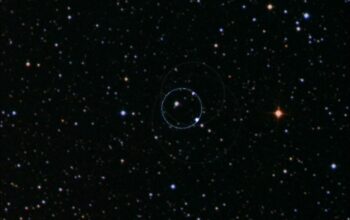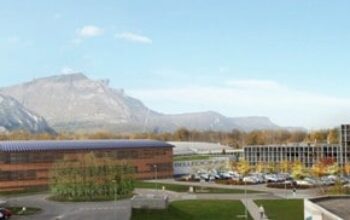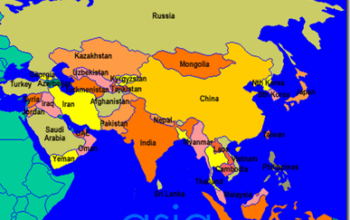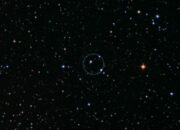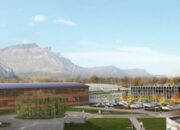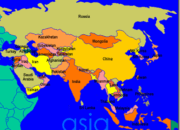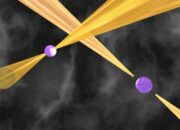The concept of identity has intrigued philosophers and scientists alike for millennia. When contemplating the nature of identity, one inevitably encounters profound questions that transcend mere physicality, branching into the realms of consciousness, existence, and even the fabric of reality itself. In light of recent advancements in theoretical physics, particularly in the context of the multiverse hypothesis, the question of “Who are we?” gains an intricate and exhilarating dimension. This contemplation invites an exploration into the myriad versions of ourselves that may exist across an expansive multiverse.
At the heart of this inquiry lies the notion that our identity is not constrained to a singular narrative. Traditional views often delineate identity as a linear progression, where past experiences cumulatively shape an individual’s present self. However, the multiverse theory posits a reality comprising countless universes, each with divergent histories and futures. The implications of such a framework lead to the consideration of alternative selves—versions of our identities proliferating across infinite timelines. Thus, one might ponder: what does it mean to have a distinct identity when it is plausible that innumerable variants of oneself occupy parallel realities?
One viable approach to understanding this phenomenon is through the lens of quantum mechanics, particularly the concept of superposition. In essence, superposition states that particles can exist in multiple states simultaneously until observed. Extending this principle metaphorically to human identities, it is conceivable that our identities, too, exist in a superposition of potentials, with every decision branching off into a different universe. If one extends this reasoning, every choice—no matter how minuscule—creates alternate realities where divergent versions of oneself thrive. This notion elucidates our fascination with personal decisions; what if the choice to pursue one career over another delineated a path where a different “you” excels in an entirely different domain?
As we delve deeper, the interplay of identity and memory deserves scrutiny. Memory serves as a key component of self-perception. The rich tapestry of our experiences weaves together to establish continuity in our identity. However, in a multiverse populated by divergent versions of oneself, it begs the question: whose memories dictate the essence of “self”? Are we defined solely by our recollections, or is there intrinsic value in the mere existence of alternative selves? The philosophical implications are staggering, and they challenge the notion of personal continuity. In exploring these layers, one encounters profound existential questions about the continuity of consciousness and the very nature of reality.
Furthermore, the multiverse is characterized not just by the existence of alternative versions of individuals but also by differing laws of physics that could govern those worlds. Imagine a universe where gravity operates under radically different parameters, leading humanity—or its equivalent—to evolve and experience existence in fundamentally distinct ways. If identities are partially sculpted by the physical laws of one’s universe, what does that tell us about our own existence? It introduces the idea that identity is an emergent property influenced by environmental constructs as much as it is by personal choices. Therefore, one is left to ponder: what are the parameters that delineate our singular identities amid a sea of possible alternatives?
This inquiry also offers a fertile ground for metaphorical exploration. Each individual can be likened to an artist, wielding a brush within the infinite canvas of the multiverse. The strokes represent choices, experiences, and the influences of the surrounding environment. Just as an artist might create countless variations of a single theme, the multiverse allows for an endless reimagining of ourselves within various contexts. One must consider how this artistic metaphor resonates with our daily lives, as we continuously shape and reshape our identities in response to the multiplicity of circumstances that life presents.
The philosophical ramifications extend to ethical considerations. If each decision spawns myriad versions of ourselves, how does one navigate moral responsibilities? The impact of our choices reverberates through the multiverse, potentially leading to vastly different ethical outcomes depending on the reality being observed. The complexity of identity thus becomes intertwined with ethics; the acknowledgment of alternate selves invites a deeper consideration of empathy and consequence across different universes. When one acknowledges the existence of other “you’s,” it heightens a sense of accountability—an ethical obligation to consider the broader impacts of one’s actions as they might play out in various realms.
Moreover, the exploration of identity within the multiverse prompts reflections on the essence of human connection. As individuals, we grapple with our relationships and societal roles. In a multiverse, the dynamics of connection shift dramatically. Each interaction may resonate across multiple versions of reality, leading to diverse outcomes and emotional landscapes. Yet, despite this complexity, the core of connection—be it love, friendship, or conflict—remains a vital force that compels individuals toward one another, perhaps suggesting a universal drive toward unity amidst diversity.
Concluding this examination, the discourse surrounding identity within the multiverse serves not merely as an intellectual pursuit but as a profound inquiry into human existence itself. It raises salient questions about the essence of self, the nature of consciousness, and the interconnectedness of all beings. Indeed, “Who are we?” is a question that manifests differently for each individual, colored by the unique experiences and choices that define one’s existence. Yet, as one contemplates the rich tapestry of identities woven through the multiversal framework, it is essential to emerge with an appreciation for the complexity and beauty that underpins human experience. In navigating these profound queries, we may arrive not only at a deeper understanding of ourselves but also at an enlightened perspective on shared humanity across the infinite expanse of existence.

